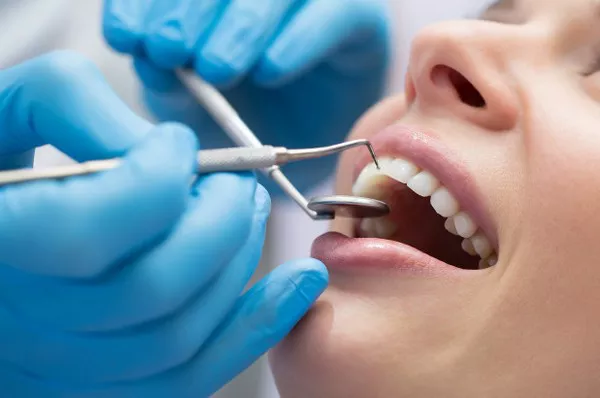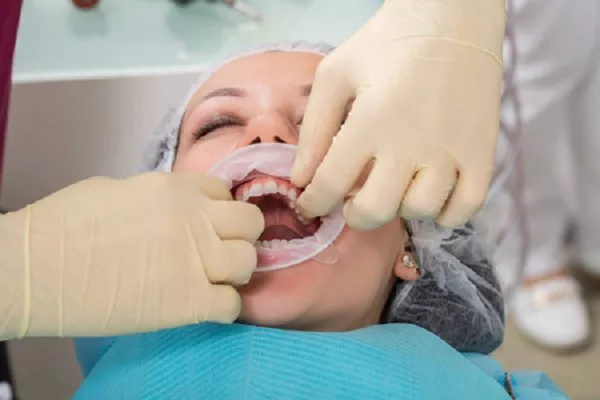Visiting the dentist often involves various procedures and treatments aimed at maintaining or improving oral health. One common practice you may have encountered is the placement of rubber bands between teeth. While it might seem unusual or unfamiliar, dental rubber bands, also known as interarch elastics or orthodontic elastics, serve crucial purposes in the field of dentistry. In this comprehensive guide, we will explore the reasons why dentists use rubber bands between teeth, the different types of dental rubber bands, and their role in various dental treatments.
Understanding Dental Rubber Bands
Dental rubber bands are small, elastic bands made of medical-grade latex or synthetic materials. They are designed for use in the oral cavity and come in various sizes, strengths, and colors. Dentists use these bands to address a range of dental issues, primarily in orthodontics and prosthodontics. Here are the primary reasons why dentists may put rubber bands between teeth:
1. Correcting Dental Alignment
One of the most common uses of dental rubber bands is in orthodontic treatment, such as braces or clear aligners (e.g., Invisalign). Orthodontic rubber bands play a crucial role in guiding teeth into their desired positions. They are often used to correct various types of malocclusions (misaligned bites), including:
Overbites: When the upper front teeth overlap significantly with the lower front teeth.
Underbites: When the lower front teeth protrude beyond the upper front teeth.
Crossbites: When the upper and lower teeth do not align correctly when the jaws are closed.
Open Bites: When certain teeth do not come into contact with their counterparts in the opposite jaw.
Orthodontic rubber bands apply gentle and consistent pressure on specific teeth, gradually moving them to achieve proper alignment. The positioning and configuration of these rubber bands vary based on the individual’s orthodontic needs.
2. Closing Gaps (Diastemas)
Rubber bands can also be used to close small gaps or spaces between teeth, known as diastemas. These gaps may occur naturally or as a result of dental procedures. Orthodontic rubber bands, when attached to neighboring teeth, exert pressure to move them closer together, ultimately eliminating the gap.
3. Jaw Correction
In some cases, rubber bands play a role in adjusting the position of the jaws, particularly in cases of overbites, underbites, or crossbites. These bands help in aligning the upper and lower jaws, improving bite functionality and overall facial aesthetics.
Types of Dental Rubber Bands
Dental rubber bands come in various types, each serving a specific purpose:
1. Ligature Bands:
Purpose: Ligature bands are commonly used to secure archwires to brackets in orthodontic treatments. They help apply consistent pressure on the teeth.
Placement: Dentists and orthodontists typically place ligature bands around each bracket, securing the archwire in place.
2. Interarch Elastics:
Purpose: Interarch elastics, often referred to as rubber bands, are used to correct bite issues and align the jaws.
Placement: These elastics are attached to specific brackets and hooks on upper and lower teeth, creating tension to guide the jaws into their correct positions.
3. O-Rings:
Purpose: O-rings are commonly used in braces to secure archwires, and they come in various colors for personalization.
Placement: They are placed around the brackets, holding the archwires in place.
4. Rubber Bands for Diastema Closure:
Purpose: These rubber bands are designed to close gaps between teeth.
Placement: Dentists place them between teeth that have a gap, and they exert pressure to bring the teeth closer together.
5. Facebow Elastics:
Purpose: Facebow elastics are used to correct bite problems and jaw alignment.
Placement: They connect from brackets on the upper teeth to a headgear worn outside the mouth or to other brackets on the lower teeth.
Safety Considerations
The use of dental rubber bands requires precision and adherence to the dentist’s instructions. Here are some safety considerations:
Proper Placement: It is essential that rubber bands are placed correctly to avoid causing discomfort or dental issues. Patients should follow their dentist’s or orthodontist’s guidance meticulously.
Regular Maintenance: Patients using orthodontic rubber bands should follow the recommended schedule for changing or replacing the bands. Regular dental check-ups are crucial to monitor progress and address any concerns.
Hygiene: Maintaining good oral hygiene is vital when wearing rubber bands. Brushing, flossing, and cleaning around brackets and wires are essential to prevent plaque buildup and tooth decay.
Pain or Discomfort: Some discomfort is expected when rubber bands are adjusted or changed. Patients should communicate any significant pain or issues with their dentist or orthodontist.
Conclusion
Dental rubber bands play a vital role in various dental treatments, primarily in orthodontics and prosthodontics. They are versatile tools used to correct dental alignment, close gaps, and improve bite functionality. The type and placement of rubber bands depend on the specific dental issue being addressed. Patients should closely follow their dentist’s or orthodontist’s instructions for the proper use and maintenance of these bands to achieve the desired results safely and effectively. With the guidance of dental professionals, rubber bands contribute significantly to achieving a healthy and aesthetically pleasing smile.
Related Topics:





























